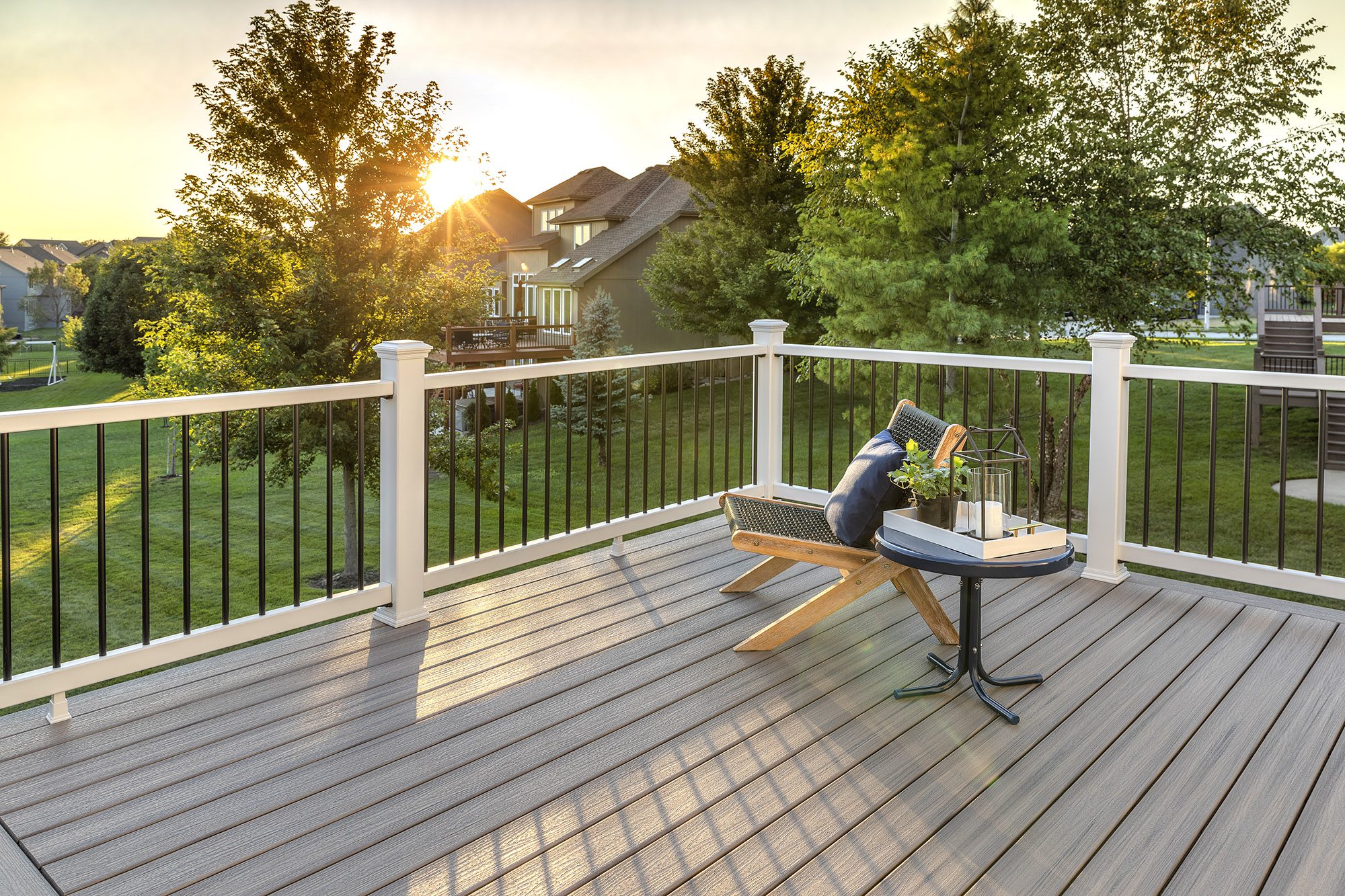Building a deck is an exciting project, whether it’s an extension of your living space, a poolside retreat, or a stylish waterfront dock. Choosing the right composite decking material can make all the difference, especially in terms of durability, comfort, and maintenance. Here are some expert tips to help you pick the best composite decking for your outdoor area.
1. Choose a Lighter Color for Comfort

One of the top considerations in composite decking is color, especially if your deck will get a lot of sun. Darker colors absorb more heat, which can make walking on your deck barefoot uncomfortable.
Lighter-colored decking generally stays cooler underfoot, making it a safer and more comfortable choice for children and pets. Shades like soft grays, light browns, and muted earth tones are popular for sunny decks, as they retain less heat while still offering a stylish look.
2. Opt for Moisture-Resistant Options for Docks and Pool Decks
If your deck is near water, like on a dock or around a pool, you’ll want a composite material that can stand up to high moisture levels. Traditional wood-composite decking contains wood fibers, which can still absorb moisture over time. This can lead to issues with mold, mildew, and swelling in especially damp environments.
To avoid these problems, look into 100% PVC decking options like TimberTech PVC decking or Deckorators SureStone decking. These materials contain no wood fibers, making them highly resistant to moisture and ideally suited for wet environments.
3. Consider Cost-Effective Scalloped Deck Boards
Composite decking can vary significantly in price, and if you’re looking to save on your project costs, scalloped deck boards are a budget-friendly option. Many manufacturers offer scalloped designs, which have a partially hollowed-out bottom.
This reduces material costs, making these boards more affordable than their full-profile counterparts. However, because scalloped boards are less rigid, it’s recommended that your deck framing be spaced closer together, ideally 12″ on center, for better support and long-term stability.
4. Check for Warranties and Manufacturer Support
Each composite decking brand offers different warranties, which can be a deciding factor if you want peace of mind. High-quality brands like Trex, TimberTech, and Deckorators typically offer substantial warranties covering performance, fading, and staining. Be sure to review these warranties when comparing brands, as they can provide valuable insights into each manufacturer’s confidence in their product’s longevity.
5. Evaluate Surface Texture and Slip Resistance
Composite decking comes in a variety of surface textures, from smooth to deeply embossed wood grains. For areas prone to getting wet, such as pool decks, opt for a board with enhanced slip resistance. Textured surfaces or specialized finishes can provide better traction, reducing the risk of slips and falls, especially around water.
6. Think About Maintenance Requirements
Although composite decking is generally low-maintenance, some boards are easier to keep clean and looking new than others. Consider options with advanced protective coatings or capped composites, which offer increased resistance to stains, scratches, and UV damage. Capped composites, which have a protective outer layer, are especially helpful for decks in high-traffic areas or for families with children and pets.
7. Prioritize Visual Appeal
Finally, take time to explore the design possibilities! Many composite decking brands offer a wide selection of colors, finishes, and grain patterns. You can even mix and match colors to create unique borders or inlaid designs. If you want a cohesive, visually appealing space, look for colors and textures that complement your home’s style and landscaping.
In Summary
Choosing the best composite decking doesn’t have to be a challenge if you know what to look for. Selecting a lighter color helps with heat management, while moisture-resistant materials are ideal for water-exposed areas. Cost-effective scalloped boards can save on materials, but ensure they’re properly supported with closer framing. With the right combination of aesthetics, durability, and design, your deck can become a beautiful, functional space that requires minimal upkeep and lasts for years.

